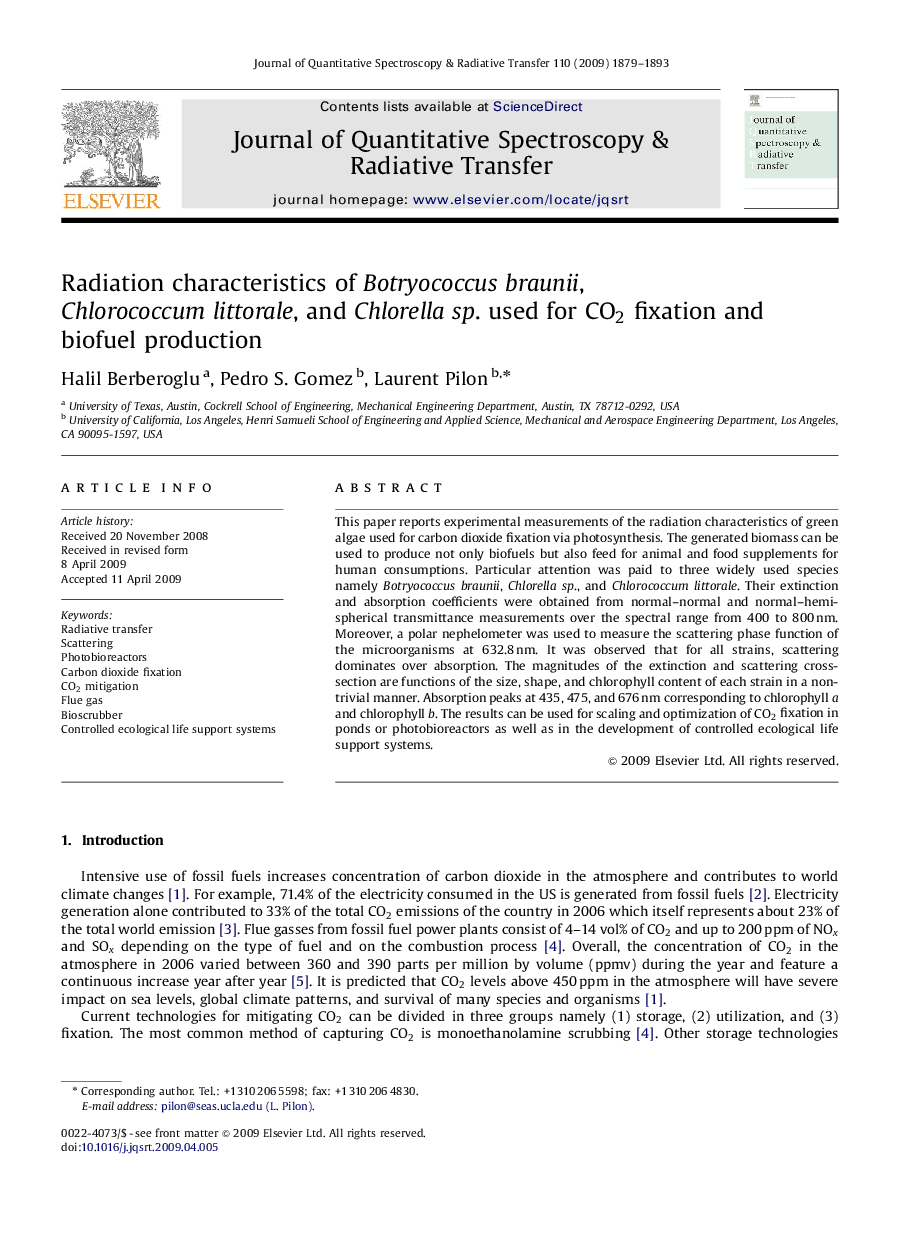| Article ID | Journal | Published Year | Pages | File Type |
|---|---|---|---|---|
| 5430058 | Journal of Quantitative Spectroscopy and Radiative Transfer | 2009 | 15 Pages |
This paper reports experimental measurements of the radiation characteristics of green algae used for carbon dioxide fixation via photosynthesis. The generated biomass can be used to produce not only biofuels but also feed for animal and food supplements for human consumptions. Particular attention was paid to three widely used species namely Botryococcus braunii, Chlorella sp., and Chlorococcum littorale. Their extinction and absorption coefficients were obtained from normal-normal and normal-hemispherical transmittance measurements over the spectral range from 400 to 800Â nm. Moreover, a polar nephelometer was used to measure the scattering phase function of the microorganisms at 632.8Â nm. It was observed that for all strains, scattering dominates over absorption. The magnitudes of the extinction and scattering cross-section are functions of the size, shape, and chlorophyll content of each strain in a non-trivial manner. Absorption peaks at 435, 475, and 676Â nm corresponding to chlorophyll a and chlorophyll b. The results can be used for scaling and optimization of CO2 fixation in ponds or photobioreactors as well as in the development of controlled ecological life support systems.
